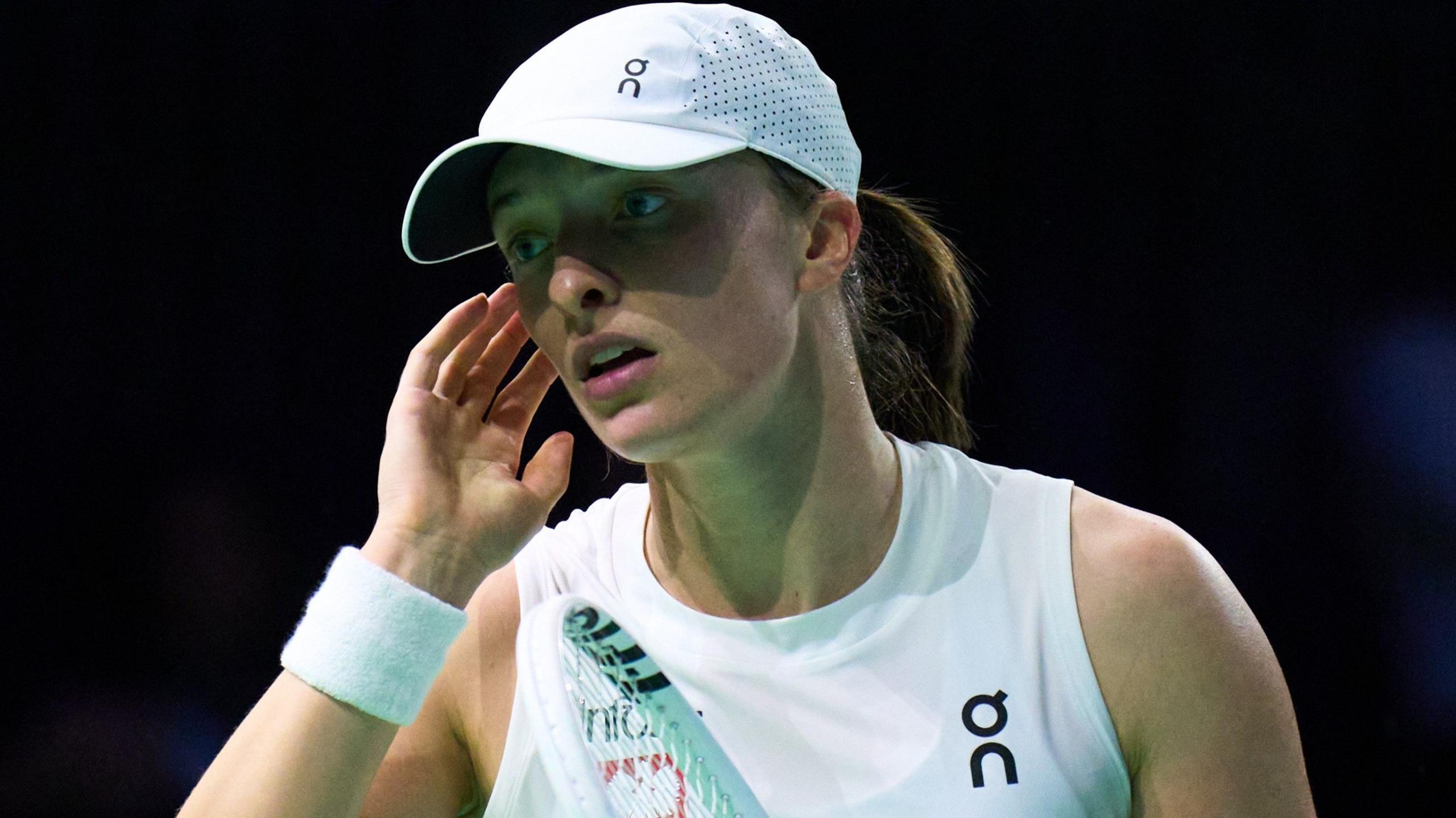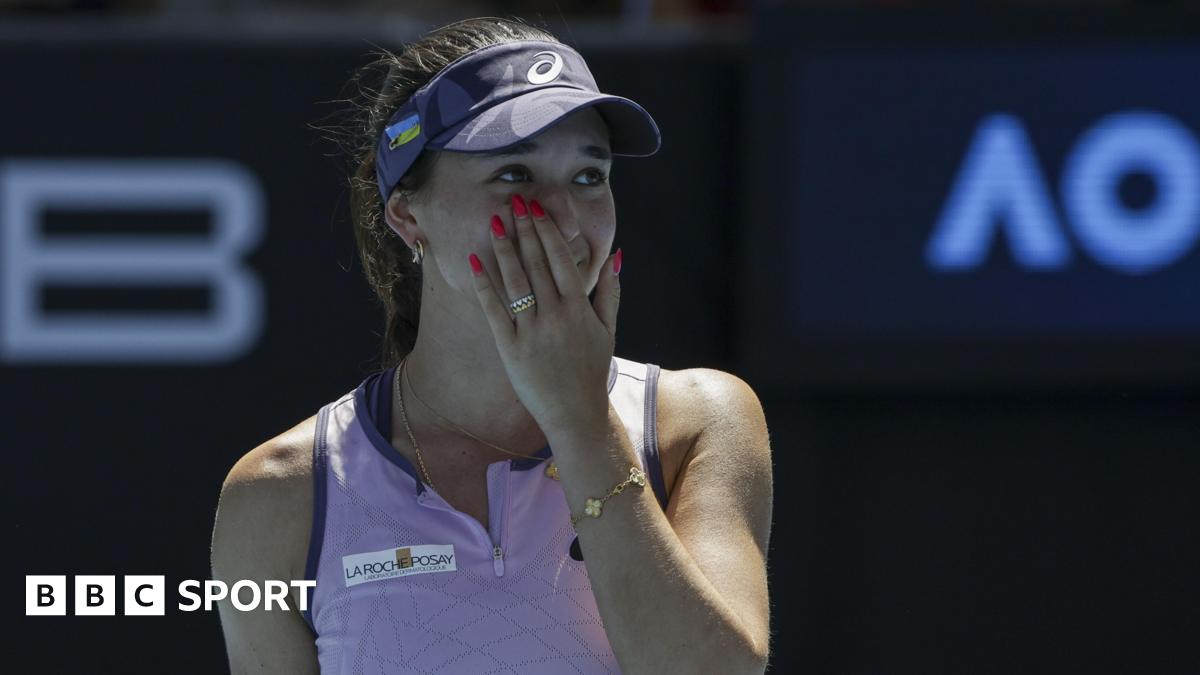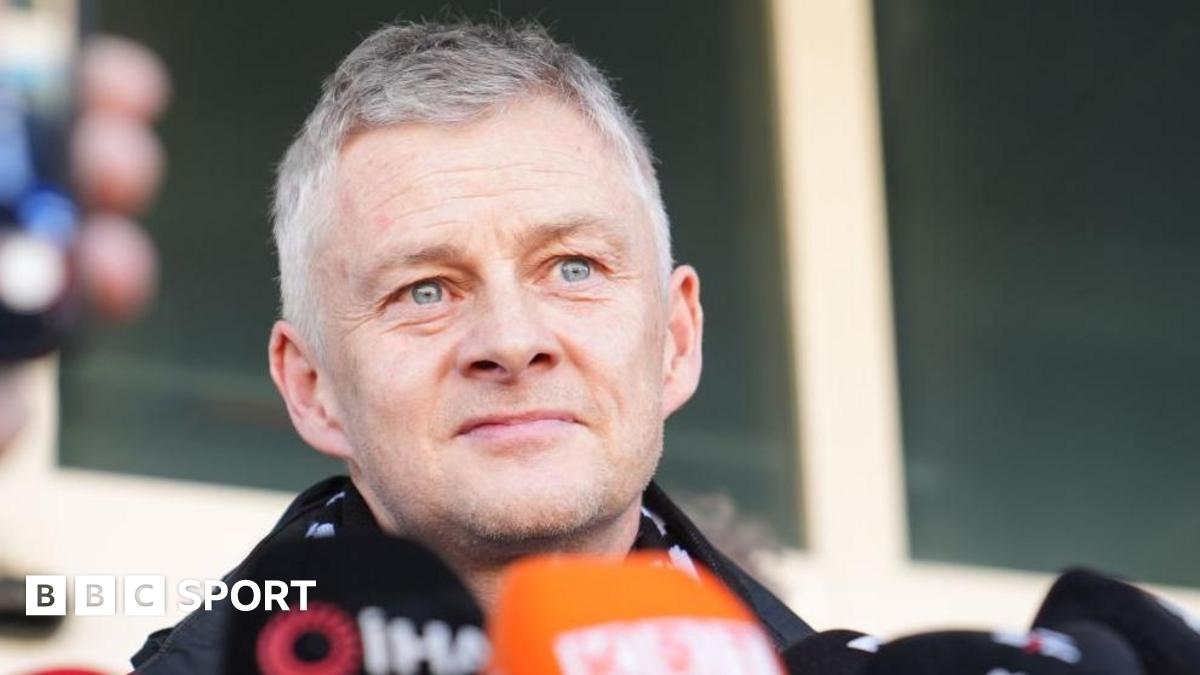ARTICLE AD BOX
 Image source, Getty Images
Image source, Getty Images
Iga Swiatek described the past two months as "the toughest battle" in her life
Grand Slam winners Iga Swiatek and Jannik Sinner have recently tested positive for banned substances.
Their cases have led to questions over the way anti-doping cases are handled and whether players are treated differently.
Two-time Grand Slam champion Simona Halep and British doubles player Tara Moore have, in recent years, spent significant time out of action waiting for doping cases to be heard.
They were critical of the time taken to hear their cases compared to those of Sinner and Swiatek, with Halep saying there were "completely different approaches".
The International Tennis Integrity Agency (ITIA), which handles doping cases, has strenuously denied any differences in the way players are treated.
BBC Sport looks at the differences and similarities between the four cases.
What are the four cases?
All four players have maintained they did not knowingly take a banned substance.
Moore's is the longest-standing case of the four, and she has spoken about the financial and emotional toll.
Halep was, at the time, the highest-profile name since Maria Sharapova to test positive for a banned substance. She has been critical of the time it took her case to be heard.
Sinner's case led to accusations the world number one had received special treatment, which the ITIA strongly denied. An independent panel accepted there was no fault or negligence by Sinner and said he had provided a credible explanation.
Five-time major winner Swiatek missed three tournaments because of a provisional ban. She accepted her positive result was caused by contamination of a medicine she was taking.
Why did Halep and Moore's cases take longer than Sinner and Swiatek's?
It is not uncommon for cases to take several months to be resolved, particularly when a player denies knowingly taking a substance.
In such cases, they can produce evidence to disprove or mitigate the failed test. That would prompt further investigation and testing by the ITIA - extending the process.
In Halep's case, she could not immediately provide evidence as to why she had tested positive.
Hers was a complex case - the original written reasons from the tribunal spanned 126 pages.
The Court of Arbitration for Sport (Cas) panel determined Halep's anti-doping violations were not intentional - but she was found to bear "some level of fault or negligence" for not exercising sufficient care over which supplements she took.
Moore slipped 600 places in the world rankings during her case and, as players serving a doping suspension cannot enter official tennis facilities, ultimately earned money by coaching beginners on public courts in the US.
Moore told The Times in July, external she believes the total cost of the case will be £200,000, and she has crowdfunded to cover her training and ongoing fees.
Her case, too, was complex.
Twenty-one players were tested in Bogota, and Moore was one of three to return an adverse analytical finding for boldenone - something the independent experts described as "striking" because of how unusual it was.
The panel ruled contaminated meat was the source of Moore's failed test. The written reasons show how difficult it was for Moore to prove when and where she had ingested the contaminated meat. She had eaten meat in different restaurants in Bogota seven days before the positive test, so it was hard to pin down the source.
Moore did provide evidence showing cattle are administered with nandrolone metabolites and boldenone in Colombia, which the tribunal described as "interesting and powerful".
The ITIA, however, argued that even if Moore had eaten contaminated meat, she should have been aware of the risk.
The tribunal "firmly rejected" that, by eating meat, Moore had acted with fault or negligence. It added players had received no warnings about the risks, and none were given until "well after" this event.
What about Swiatek & Sinner's cases?
Image source, Getty Images
Image caption,Iga Swiatek won Olympic bronze as well as a fourth French Open title this year
There are some key differences in Swiatek and Sinner's cases.
Both were given provisional bans after testing positive, in accordance with ITIA rules.
Both appealed within 10 days of being informed, meaning the process is confidential - and remains so if the appeal is successful. Once cases have been to tribunals, the outcomes are made public., external
Swiatek was given her ban on 12 September and appealed against it on 22 September. Three days later, the ITIA responded, saying that based on the evidence available at that stage, the ban would not be lifted.
The following day, just before news of Swiatek's suspension was to be made public, her team wrote to the ITIA to say they had identified a contaminated melatonin tablet.
They were asked to send packets of all products she had been using before the test to a laboratory in Salt Lake City. The lab found the melatonin tablets - a non-prescription medication used to help sleep - were contaminated with TMZ during manufacture.
Swiatek's provisional suspension was lifted on 4 October. She received a formal charge letter on 11 October, accepted in a letter on 23 October that TMZ was present in her sample, and subsequently accepted a one-month suspension.
The 23 days covered by Swiatek's provisional suspension from 12 September to 4 October counted towards the one-month ban, meaning she had eight days still to serve when the ban was publicly announced on 28 November.
She missed three tournaments while under the provisional suspension, but was able to play at the WTA Finals and Billie Jean King Cup because they took place after it was lifted.
Sinner 'surprised' by World Anti-Doping Agency's appeal
Sinner's lawyers moved even quicker. They filed an appeal on the same day they were informed of the positive tests.
He twice tested positive for clostebol so was given two provisional bans, which he successfully appealed against and had lifted within one and three days respectively.
Sinner was able to quickly provide evidence to support his case that he had been inadvertently contaminated with clostebol.
Speaking about the cases on Thursday, ITIA chief executive Karen Moorhouse said:, external "These aren't cases of intentional doping. We're dealing with inadvertent breaches of the rules.
"So I don't think this is a cause for concern for tennis fans. We're being clearly open, transparent, and it shows the breadth and depth of our anti-doping programme."
Are there similar cases to Swiatek and Sinner?
Moorehouse, speaking in October, said: "The way we manage cases does not change, irrespective of the profile of the player involved.
"The way a case unfolds is determined by its unique circumstances, facts and science."
There are two recent cases during which players have tested positive for the same substances as Sinner and Swiatek, with different outcomes.
Italy's Stefano Battaglino, who has a career-high ranking of 760, tested positive for clostebol in September 2022. Fourteen months later, he was given a four-year ban.
Similarly to Sinner, Battaglino said the clostebol was in a cream applied to him by a tournament physiotherapist during a mid-match medical timeout.
Sinner said he had been contaminated by his physio, who had applied a spray containing clostebol to a cut on his own hand before treating Sinner. Because Sinner employed him, he was able to quickly contact him and identify the product that contained the substance.
Battaglino, by contrast, could not get in contact with the physio and therefore had no physical evidence to help back him up. The independent tribunal found him "generally credible" but there was not enough scientific and factual evidence to convince them it was not intentional.
His appeal to Cas was also unsuccessful., external His ban will end on 31 January 2027.
Czech teenager Nikola Bartunkova was given a six-month suspension after testing positive for trimetazidine in February.
Like Swiatek, she was able to prove it was through contamination - in this case a supplement. Her provisional suspension covered the length of her ban, and Bartunkova was able to return to playing immediately.
The ban was mentioned in the written judgement for Swiatek's case. It states Swiatek's ban was shorter because her violation was from a contaminated medication, compared to a supplement in Barunkova's case, and Swiatek "reasonably perceived a lower degree of risk of contamination due to the higher regulatory standards for medicines in the European Union (as compared to supplements)".
The ITIA told BBC Sport in November that "no two cases are the same".
"They often involve different circumstances, and direct comparisons are not always helpful," it said.
The ITIA tests players on behalf of the ATP, WTA, ITF and the four Grand Slams. Its third-quarter update, released in October, stated it conducted tests in 51 countries, external, testing players at various levels.
What effects do the substances have?
Roxadustat is used medically to treat anaemia - an iron deficiency which can cause fatigue. It increases the number of red blood cells in the body and haemoglobin - a protein that carries oxygen - found in those cells. Having more oxygen in your body helps improve endurance and recovery.
Boldenone is an anabolic steroid that can increase muscle mass growth.
Nandrolone is an anabolic steroid used to treat anemia and osteoporosis - a disease from which bones become fragile.
Clostebol is a steroid that can be used to build muscle mass.
Trimetazidine is a medication usually taken to treat heart-related conditions.
The International Tennis Integrity Agency is an independent agency that assumes responsibility for the anti-doping programme.
The World Anti-Doping Agency co-ordinates anti-doping rules and policies across sports and countries.

 1 month ago
9
1 month ago
9








 English (US) ·
English (US) ·